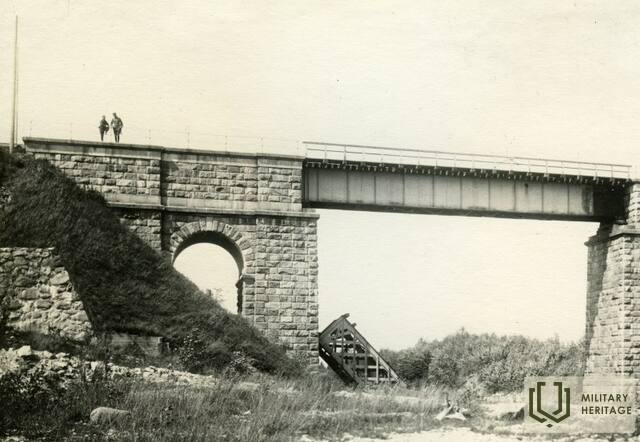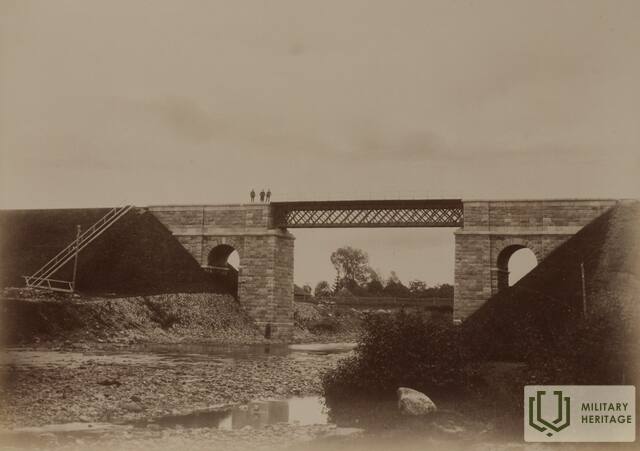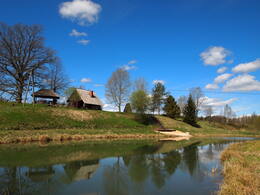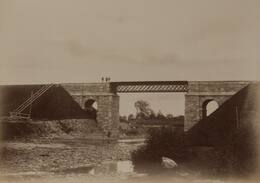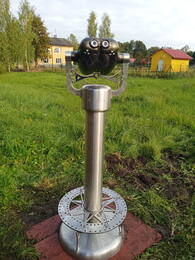The Battle of Cēsis on the banks of the Amata River
At the bridge over the Amata, the German Landeswehr attacks an Estonian armored train that has arrived for negotiations. The Estonians open counterfire, the Germans are repulsed, and the armored train returns to Cēsis.
A completely unexplored page in the battles of Cēsis is the clash at the bridge over the Amata River on the evening of June 5, 1919. This is the place where the German Landeswehr reveals its true intentions. Until then, in negotiations, the Germans claim that the Red Army is in Cēsis (in fact, the armies of Northern Latvia and Estonia are there), and the German army is waiting for its attack in Ieriķi. Estonian armored train No. 2 with its commander Captain Lepp - on the orders of the commander-in-chief, General Laidoner - goes to negotiations at the Ieriķi railway station. The Germans do not arrive at all and send a message that they will wait for the negotiators south of the bridge over the Amata. A soldier from the Cēsis Pupils' Company, Kārlis Dzirkalis, is assigned to assist the Estonian team - as a good expert on the area. Two colonels are also on the armored train - the Allied plenipotentiary Green (W.Green) and the Estonian Reek (Reek). The train stops further from the bridge on the northern (Cēsis) side. The sapper Lieutenant Lutsaar (Lutsaar) with a few men goes to check whether the bridge is mined. Commander Leps with the two colonels follows 200 steps behind the sappers.
"On the other side, German cart horses graze in the Amata meadows. There is complete silence all around. However, when the sappers go under the bridge on the right side to look at the bottom, machine gun fire is opened on them from the opposite bank of the river. The two colonels and Capt. Leps are thrown into the ditch on the left side. The next moment, several chains of infantry run out of the pine grove and rush to storm the train with grenades in their hands."
From the memoirs of Colonel Nikolajs Rēkas: "At 7:00 p.m., the Germans opened fire on our scouts from the edge of the forest, which was on the other side of the bridge. After 1/4 hour, German chains came out of the forest and began to surround the assault units of the armored trains. I ordered Capt. Lepa to open fire on the enemy. When the Germans were repulsed and the scouts, who had a second clash with the Landeswehr, in which the acting officer Kontus fell, were taken onto the train, I ordered them to return to Cēsis. From this incident it was clear that the Landeswehr was hostile to us."*
Cēsis Battle Planner, Chief of Staff of the North Latvian Brigade General Staff (Lieutenant Colonel) Voldemārs Ozols: "Despite all the efforts of the Entente and us to avoid bloody clashes, on June 5th one happened. Our armored train with Entente representatives between Āraiši and Ierīki near the Amata Bridge was suddenly attacked by the Germans, injuring two Estonian soldiers. The train repelled the attack, but with that the war between Golca and us had begun. On June 6th at 3:00 in the morning the Landeswehr launched a rapid attack, supported by heavy artillery, mortar and machine gun fire."*
Publicist and public figure, editor of many press publications, Oto Nonācs wrote in 1934: "The events near Cēsis are not just narrow local battles, but have broad international significance; that the outcome of this battle (our victory on June 22, 1919 at Skangaļi Manor) has drawn a line under German far-reaching intentions, the fulfillment of which would have greatly changed the map of Europe. The foundations of the brotherhood of the Latvian and Estonian peoples and the cooperation of the two countries were laid in the battles of Cēsis. The awareness born at this fateful moment that there is no Latvia without Estonia and no Estonia without Latvia has become the heritage of both nations, and this awareness is taking deeper and deeper root in both nations."*
* quotes from the publication of the Cēsis Museum Association "When the Cannons Singed Līgo...", 1994.
Related objects
Recreation Place “Meža kaujas”, the Main Venues of the Cēsis Battles near the Amata Bridge
Named Forest Battles, the rest area is situated in the main location of the Battles of Cēsis near the Amata bridge. Visitors can listen to stories about the Battles of Cēsis and can take part in various activities, including hikes and trips around the most important venues of the Battles of Cēsis, and team battles. At the end, the visitors can enjoy an invigorating wartime soup. The railway bridge over Amata played a very important role throughout the War of Independence, as the first clashes of the Estonian Army with the Landeswehr took place here. On 5 June 1919, the first battle of the Estonian Army’s armoured trains with the Baltic Landeswehr units took place by the railway bridge over Amata. The Landeswehr, knowing that an armoured train was approaching, planted mines on the railway bridge and secured positions at the homestead Amatas on the riverbank in preparation for a possible battle. The bridge over Amata marked the border between Estonian forces and the Germans. On the night of 23 June 1919, during the Battles of Cēsis, the Landeswehr left Cēsis and retreated to the Amata river line. When retreating, the Germans burned down the Cēsis Latvian Society House and blew up the bridge over Amata.
A unique opportunity is offered to watch the events of June 5, 1919 through virtual reality glasses.
Railway bridge over Amata
Located in Drabeši parish, Cēsis region, near the recreation area "Meža koujas".
A railway bridge over the Amata River is visible.
The railway bridge over the Amata River plays a very important role throughout the course of the War of Independence, as the first battle between the Estonian army's armored trains and the Baltic Landeswehr units took place here on June 5, 1919. The Landeswehr, knowing that the armored train was approaching, mined the railway bridge and took up positions in the "Amata" houses on the riverbank, ready for possible hostilities. The bridge over the Amata River was the border between the Estonian forces and the Germans.
Historical evidence of the events at the Amata Bridge has not been preserved. Since Latvians did not participate in these events, there are no memoirs from them, there are memories from Estonian soldiers, other sources. It can be said that this was a joint Estonian-American battle against the Landeswehr, because an American officer was on the Estonian armored train, who later also fought in World War II. In general, many future officers and commanders of World War II participated in the Cēsis battles, especially on the German side.
The Estonian armored train arrived in Cēsis on June 2, 1919, and a day later went to Ieriķi, where negotiations with the Landeswehr took place, which were fruitless, and on June 5, when the armored train again approached the Amata Bridge, a clash with the Germans began. The armored train also took part in the battles near Cēsis a day later, where it helped the soldiers of the Schoolchildren's Company, who were threatened with encirclement. Although the Germans tried to dismantle the tracks to cut off the train's retreat, it managed to retreat across the Rauna Bridge.
On the night of June 23, 1919, during the Battle of Cēsis, the Landeswehr abandoned Cēsis and retreated to the Amata River. While retreating, the Germans burned down the Cēsis Latvian Society building and blew up the bridge over the Amata.
Virtual reality binoculars "Battle of Cēsis"
The Battle of Cēsis was one of the most significant turning points in the course of the Latvian War of Independence (1918 - 1920). On June 5, 1919, with a clash between armored trains of the Estonian Army and Landeswehr units near the Ieriķi railway station at the bridge over the Amata, the first stage of the Battle of Cēsis began. In commemoration of this event, a tourist attraction has been created near the Ieriķi station, which offers to experience the story of history using the possibilities of modern technology - with the help of virtual reality. The five-minute video “BATTLE AT THE BRIDGE OVER THE AMATA” can be viewed for free every day in virtual reality binoculars. Video duration: 5 min., LV with subtitles LV, ENG, EST and ES.




